News
Trying to fire up my friend's 5-decade-old Jaguar XJ6 S1
My friend, Peter, bought it some 20-25 years ago from a guy in the USA and got it shipped to the Netherlands.
BHPian Jeroen recently shared this with other enthusiasts.
Early Thursday morning I set off in my Jeep to drive all the way up to spanner mate Peter. Left at about 07.50 and arrived around 09.35. About 140 km, of which 110 or so motorways. Not too bad.
Peter’s XJ6 S1 had not run for several years. It was running but broke down near where he lived. Had the Jaguar towed home and that is where it has been sitting ever since.
After sitting in his garage for a couple of years, the brakes had become stuck. Usually, that is just rust that builds up and it just takes a bit of a push or in this case a little pull with the Jeep to get everything freed up again.
So I backed up my Jeep.
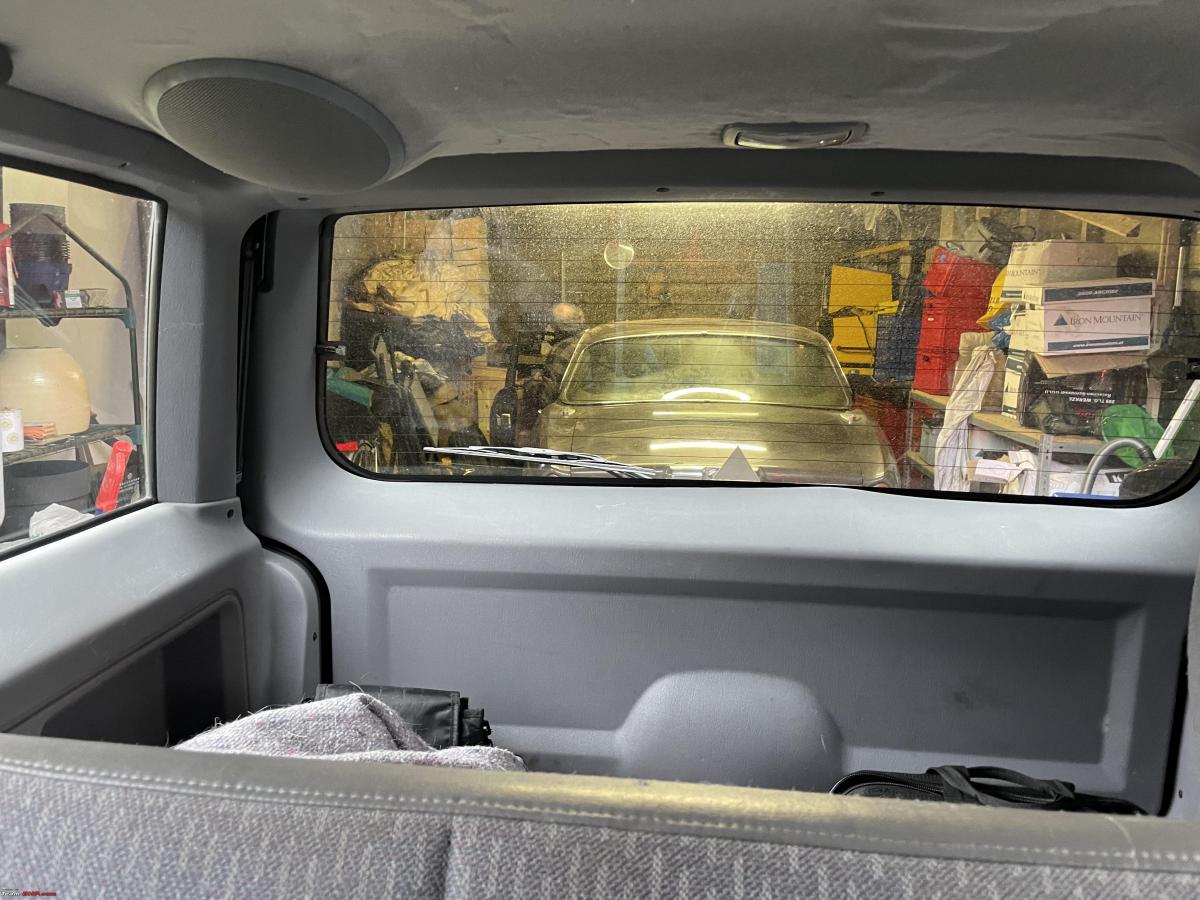
As expected it needed just a little tug and it rolled out of the garage with no problem.
Disconnected the tow rope for now.
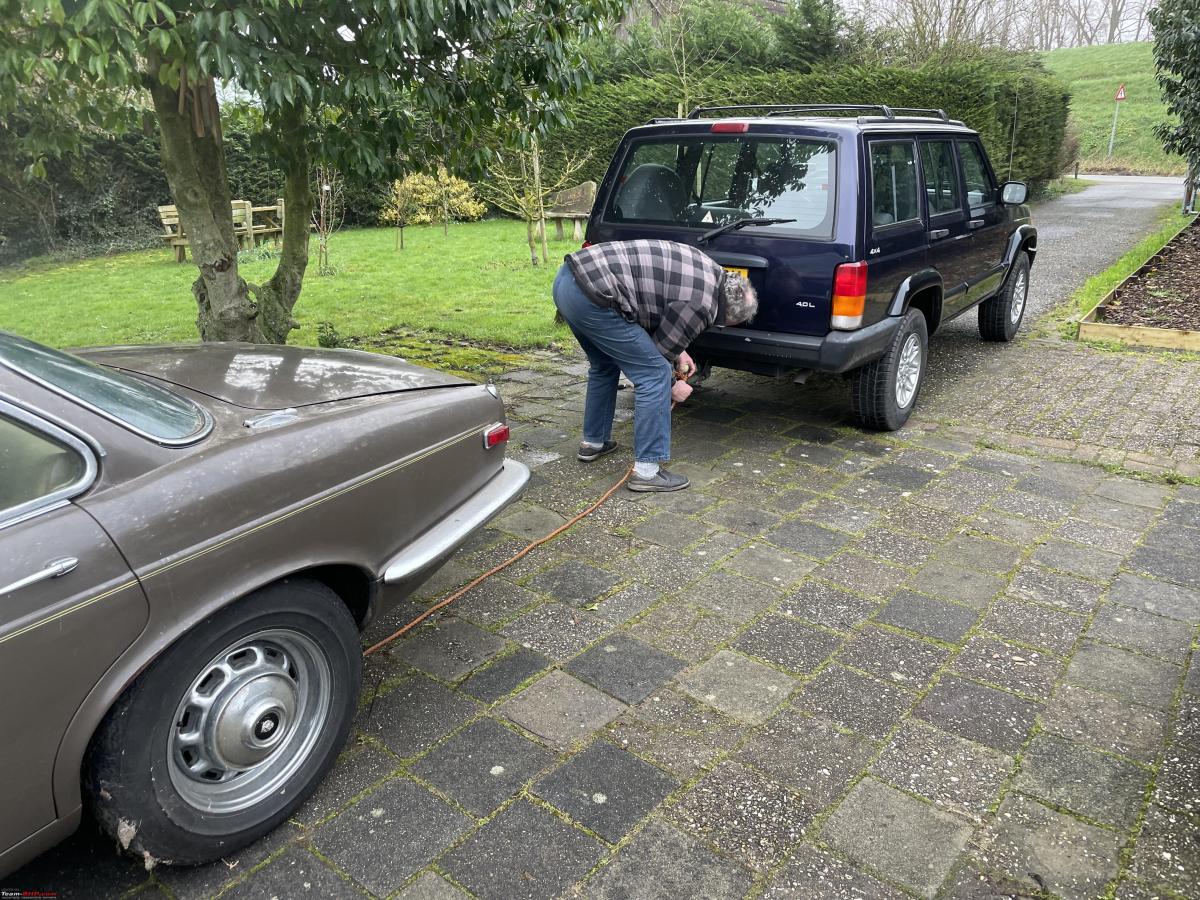
This is a 1973 Jaguar XJ6 S1. It will be 50 years old next month. Which means here in the Netherlands it is exempt from (bi)annual mandatory inspection, MOT or APK as we call it.
It did show it had been put away in Peter’s garage for several years, with nothing done to it.

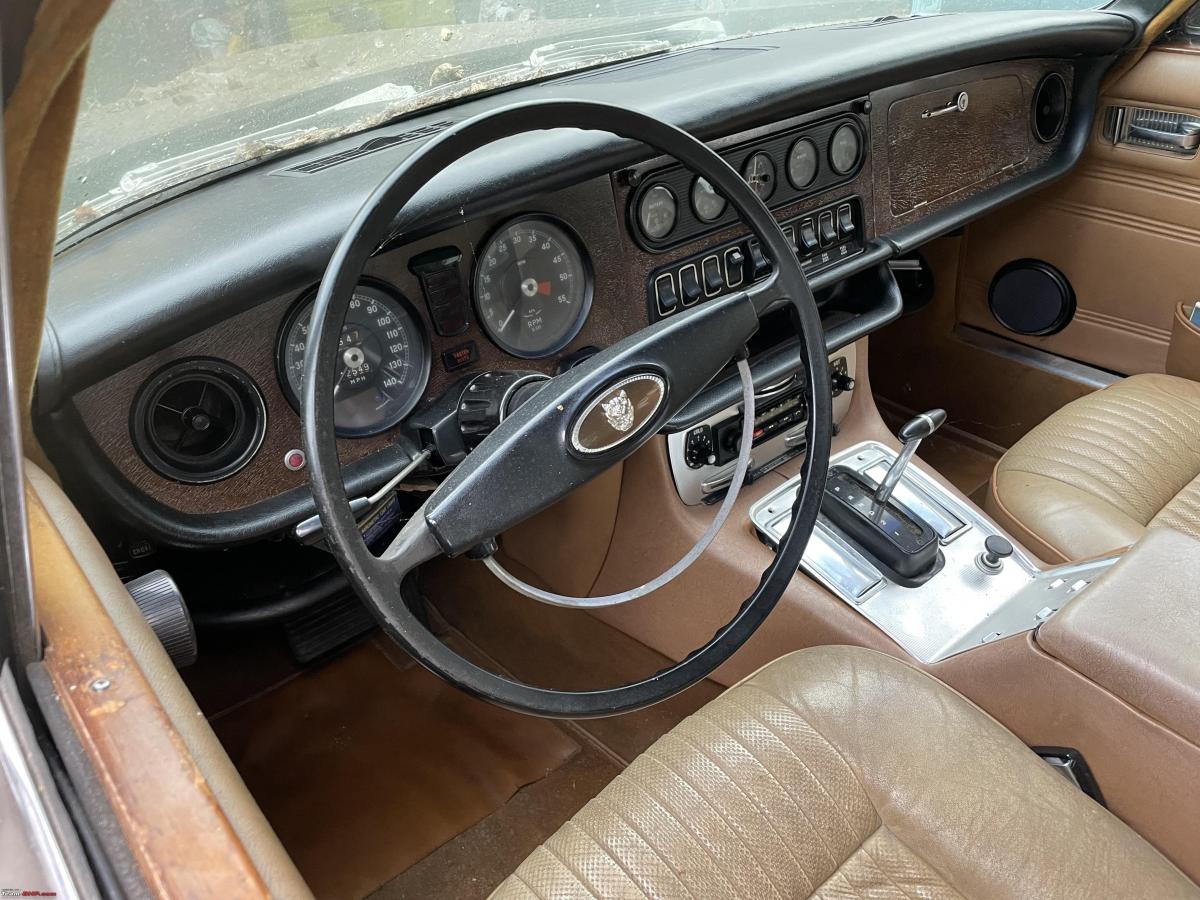
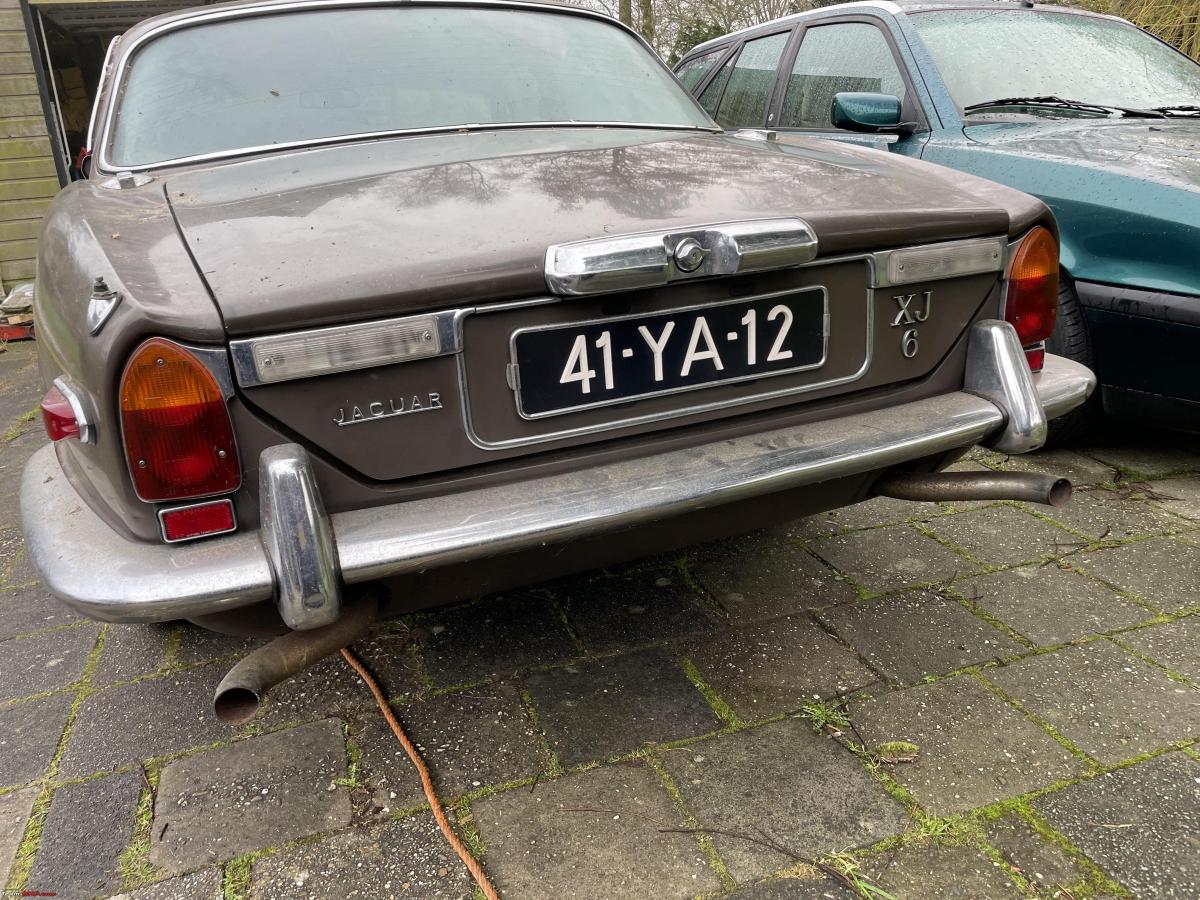
Peter bought it probably some 20-25 years ago from a guy in the USA. Had it shipped and imported into the Netherlands. Over the years we have fiddled with it quite a bit. In fact, I can honestly say I have spent more hours fiddling with this car than driving it. Come to think of it, I am not even sure I have ever driven in it. Peter has. I know he has taken it to the UK once or twice as well.
This car has a beautiful inline 6-cylinder engine. Coming from the USA, it also had a very special air pump attached to the engine. That ensured emissions were kept in check. Not necessary here, so it has been disconnected. Everything still works on this car, including the air conditioning. Oh well, of course, the engine doesn’t work either. But everything else, such as radio, electric windows etc does, which as far as a Jaguar from this era goes, is quite the feat!!
Quite a large engine bay
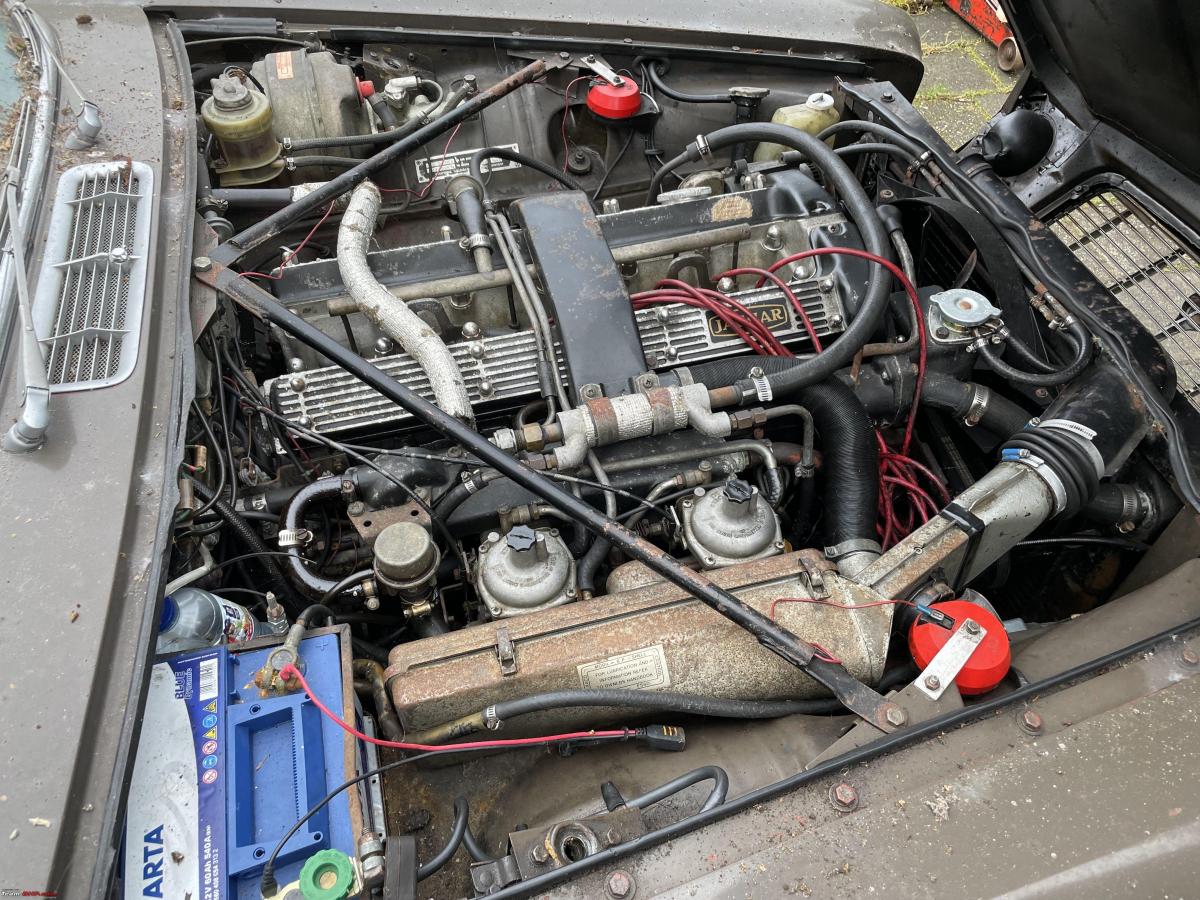
You can see the emission air pump in front of the exhaust manifold. Notice no V-belt!
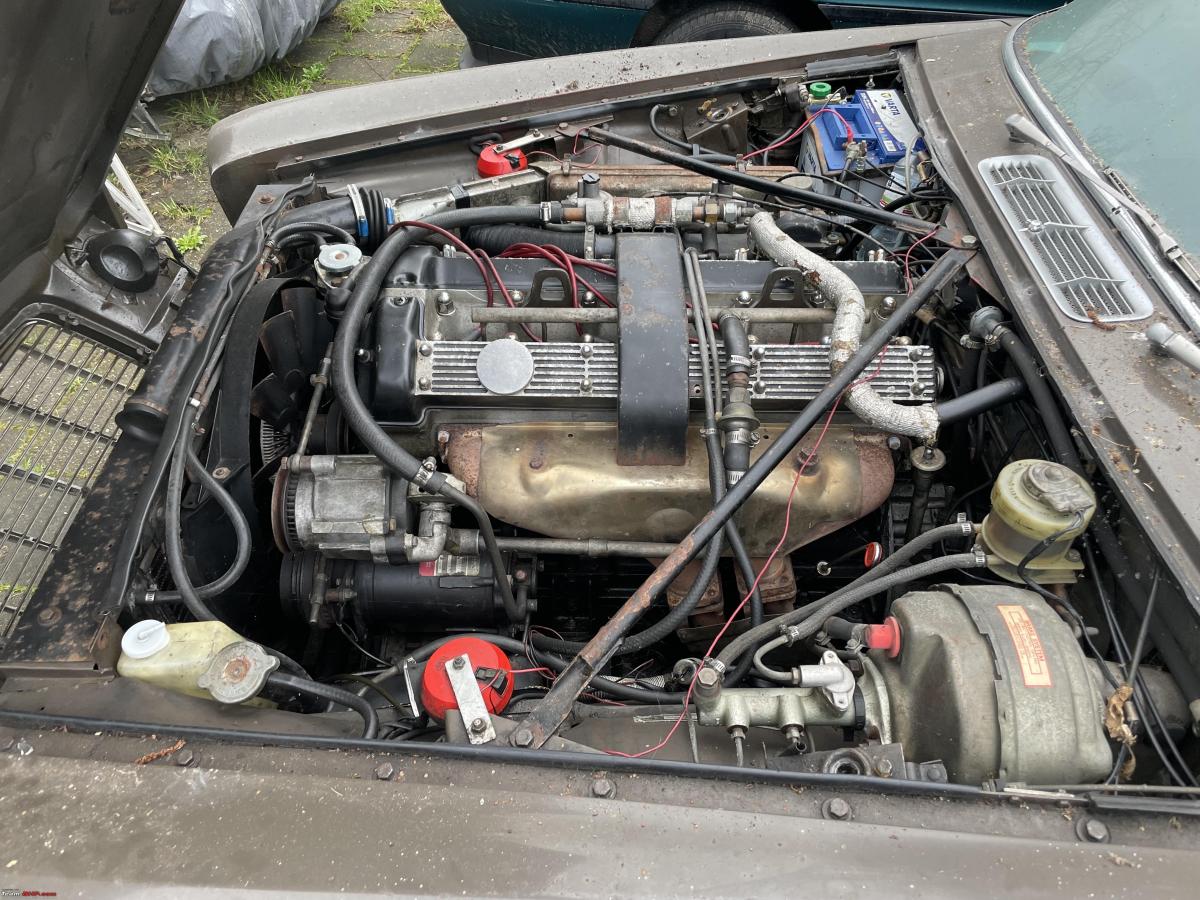
Peter had charged the battery and I checked it with my multimeter. Engine cranks just fine, we felt. But it doesn’t fire up. What it does do, is leak an awful lot of fuel from the two carburettors. Ten or fifteen years ago we had the same problem when we tried to revive it that time. What happens is that the fuel in the carburettor eventually evaporates. There is a large plug pushed into the float chamber which has an O-ring. When that O-ring gets exposed to fuel/air mixture it eventually dries out and it starts leaking. So Peter ordered two new plugs.
It did not stop us from investigating further. Because if anything we felt the complete fuel system is working fine, except it leaks a bit. So we started by looking at the various ignition components. Easiest check is to pull a spark plug out, hold it against the engine still attached to the lead (ensure you have a good mass) and crank the engine. You should see the sparking.
But we did not get any spark. So we took out the spark plug and held the lead to the engine and cranked. No spark. We checked with a different spark plug and lead and again no spark.
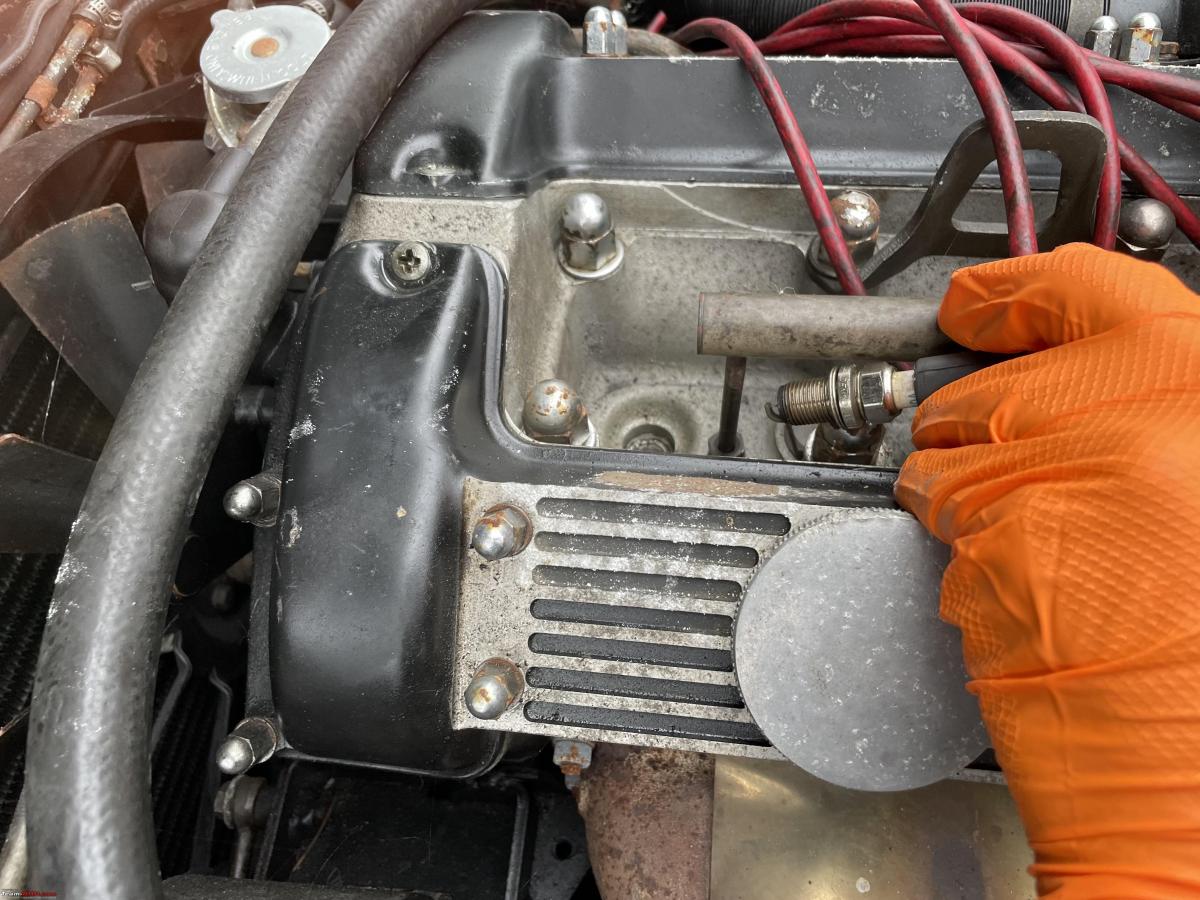
Whilst we had some of the spark plugs out, we decided to do a quick compression test too. The problem with engines sitting idle for years, is that sometimes the piston rings get stuck. But the compression was fine. One less worry.
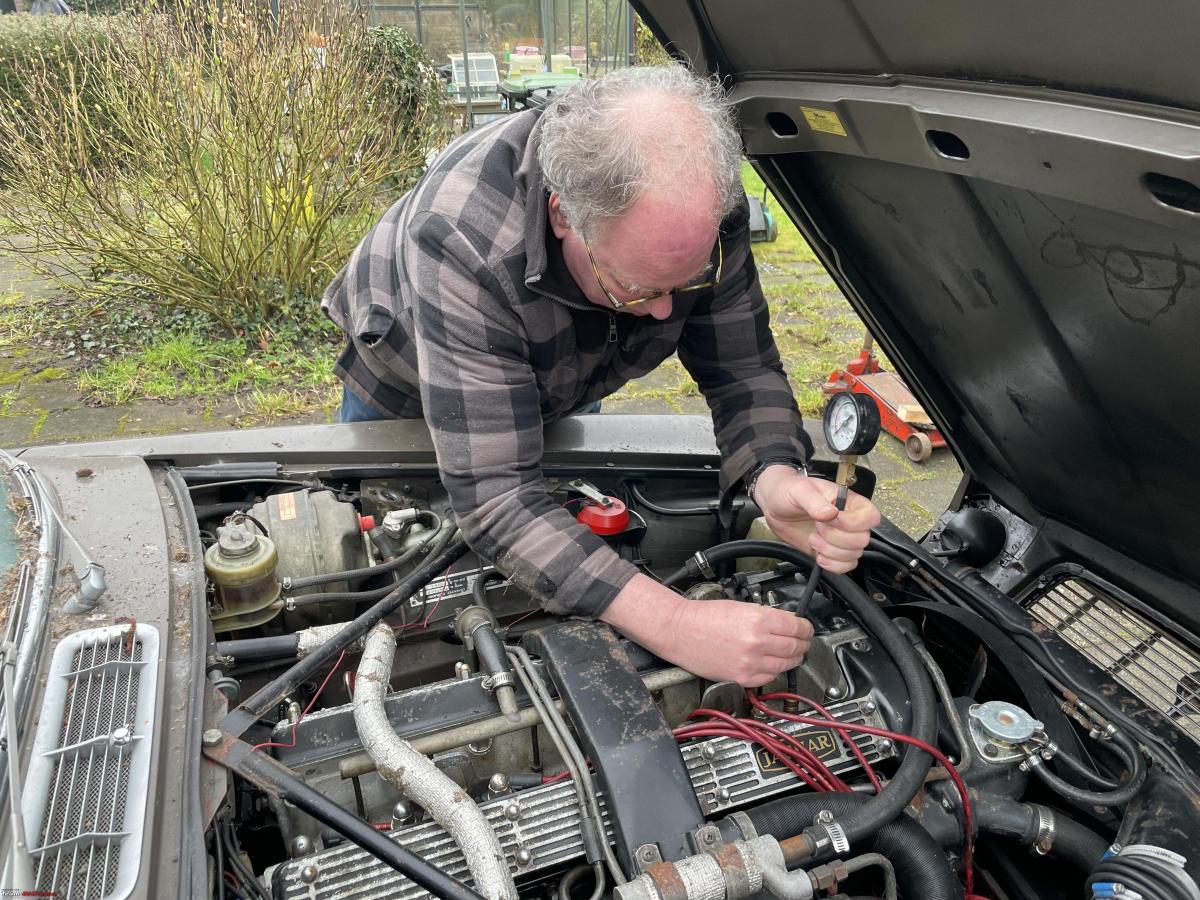
Next we pulled the HT lead coming from the coil, held it near the engine and cranked. We did see a good spark! We wanted to have a closer look at the distributor, which meant taking the air filter assembly off, the horn and a few other bits and pieces, to get some access to the distributor. You can barely see it here, it is below that black bellowed hose, which we also removed.
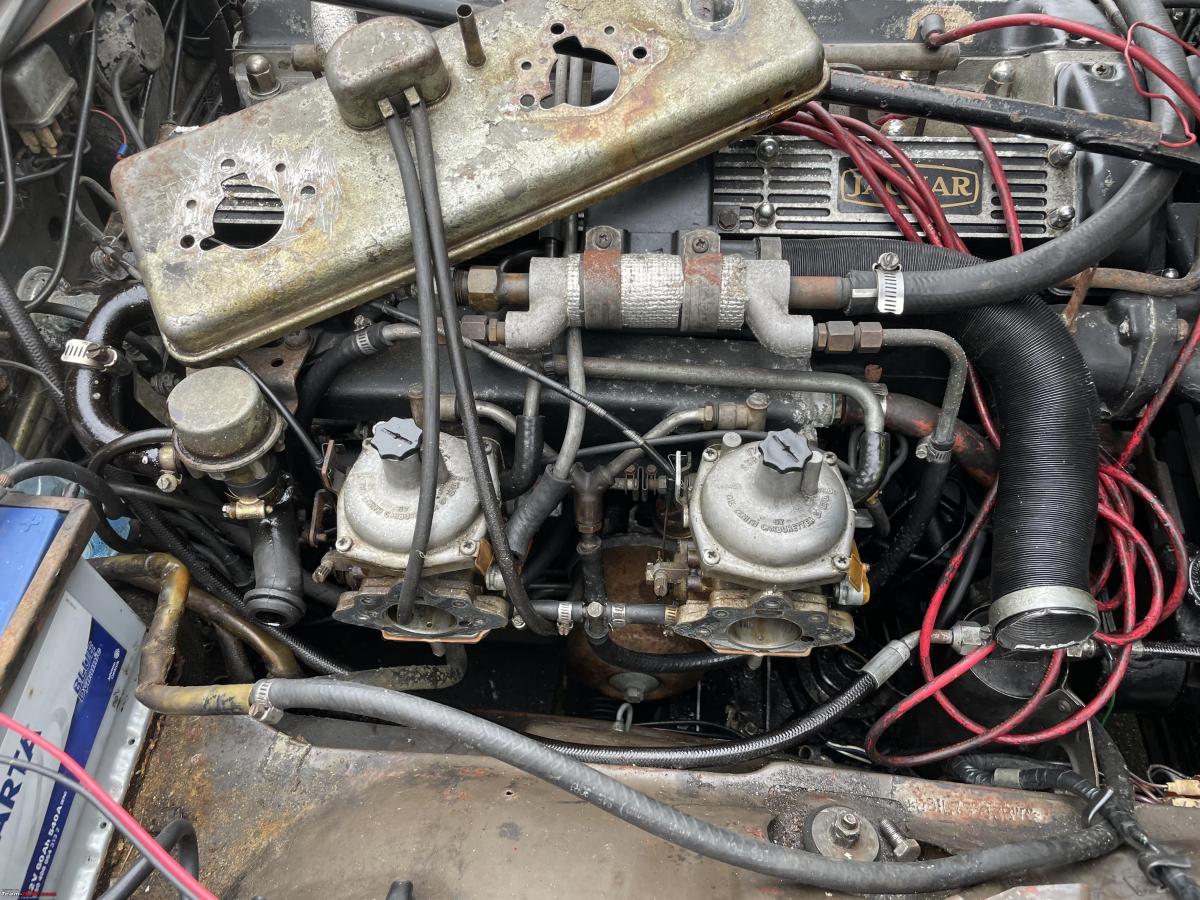
Coil is also deep down in the belly of this beast.
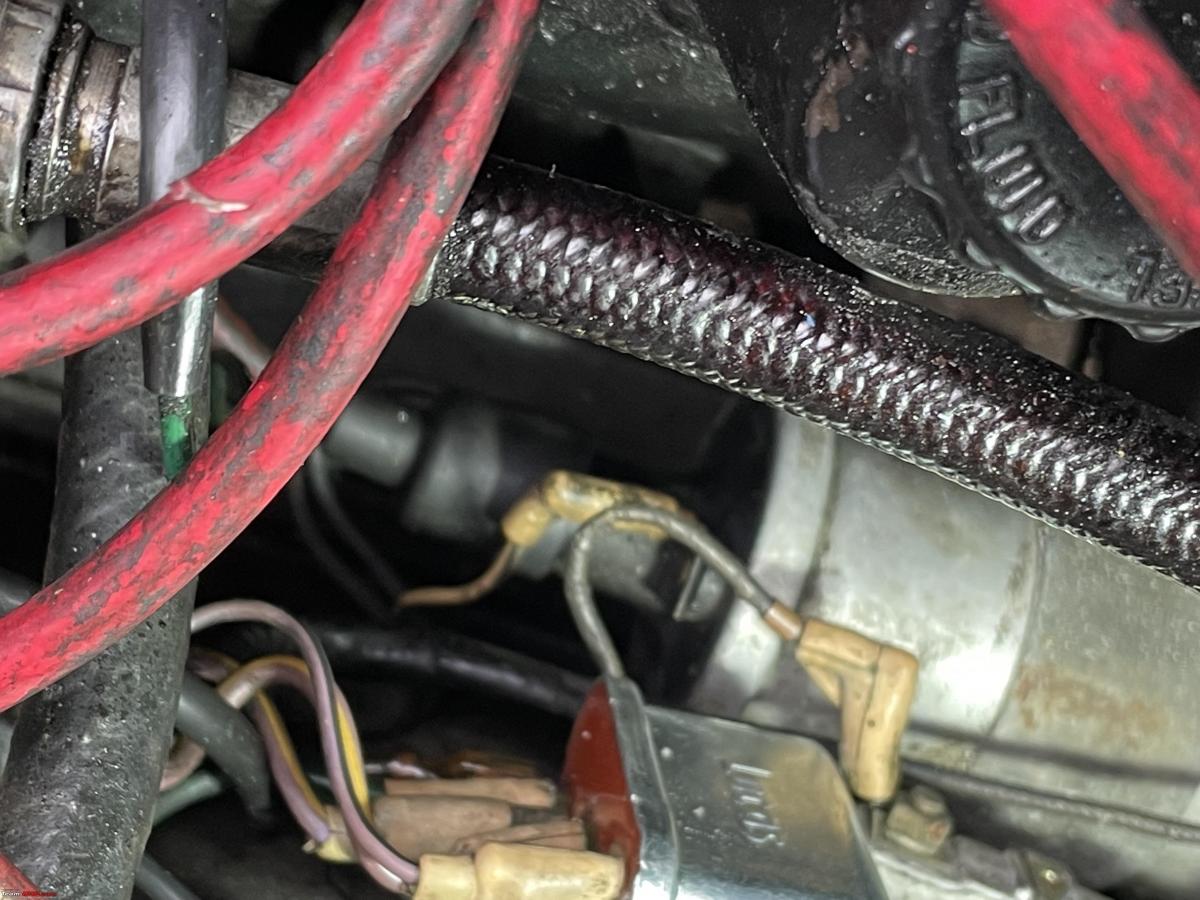
We took several measurements of the various leads, the coil. The problem is that unless you have a real short or complete disconnect it is often difficult to draw to much of a conclusion. The leads have a certain impedance, but with a multimeter you only measure ohm.
In the end, we decided to remove the old mechanical breaker and capacitor. Very simple, fastened with just two little screws.
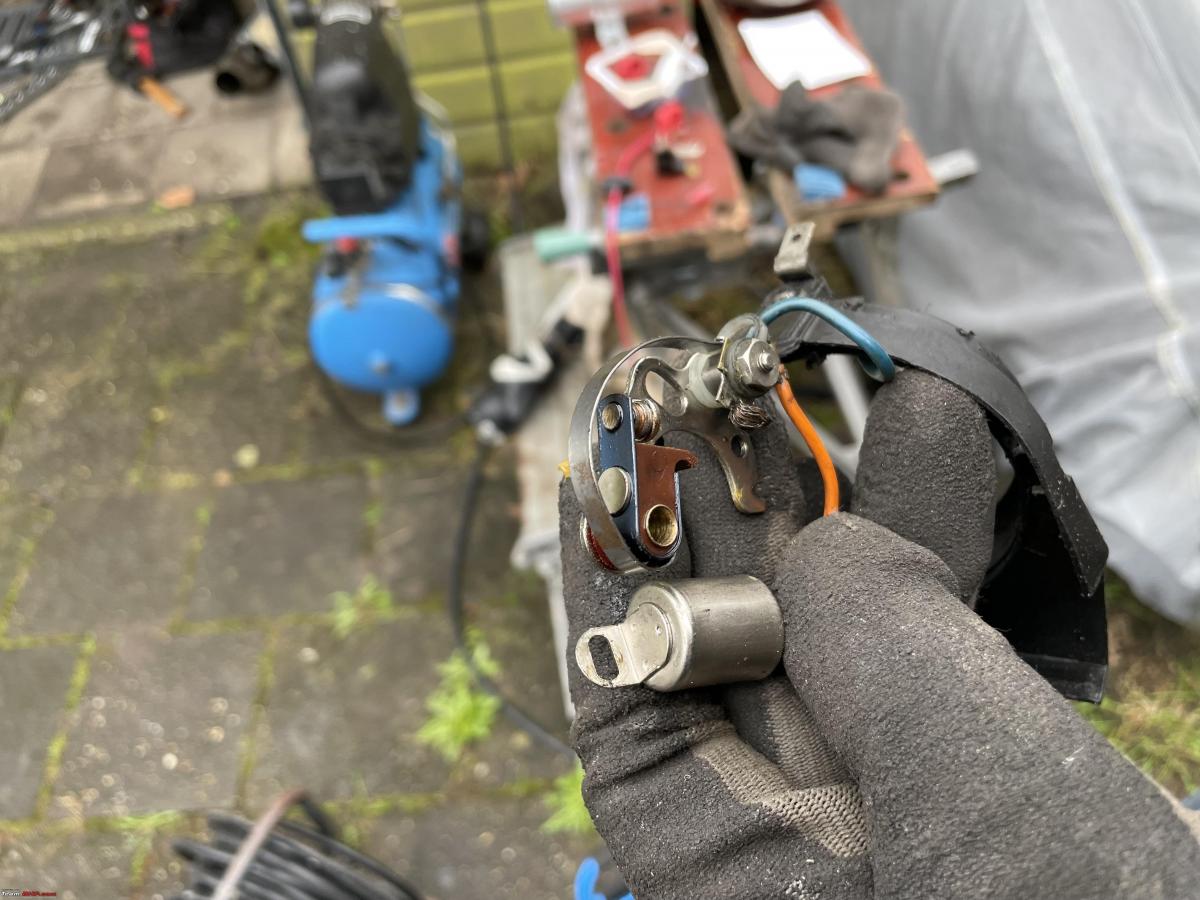
We installed an electrical breaker instead. Basically a Hall type of switch. These are very simple and extremely reliable and never wear. Instructions are simple enough.
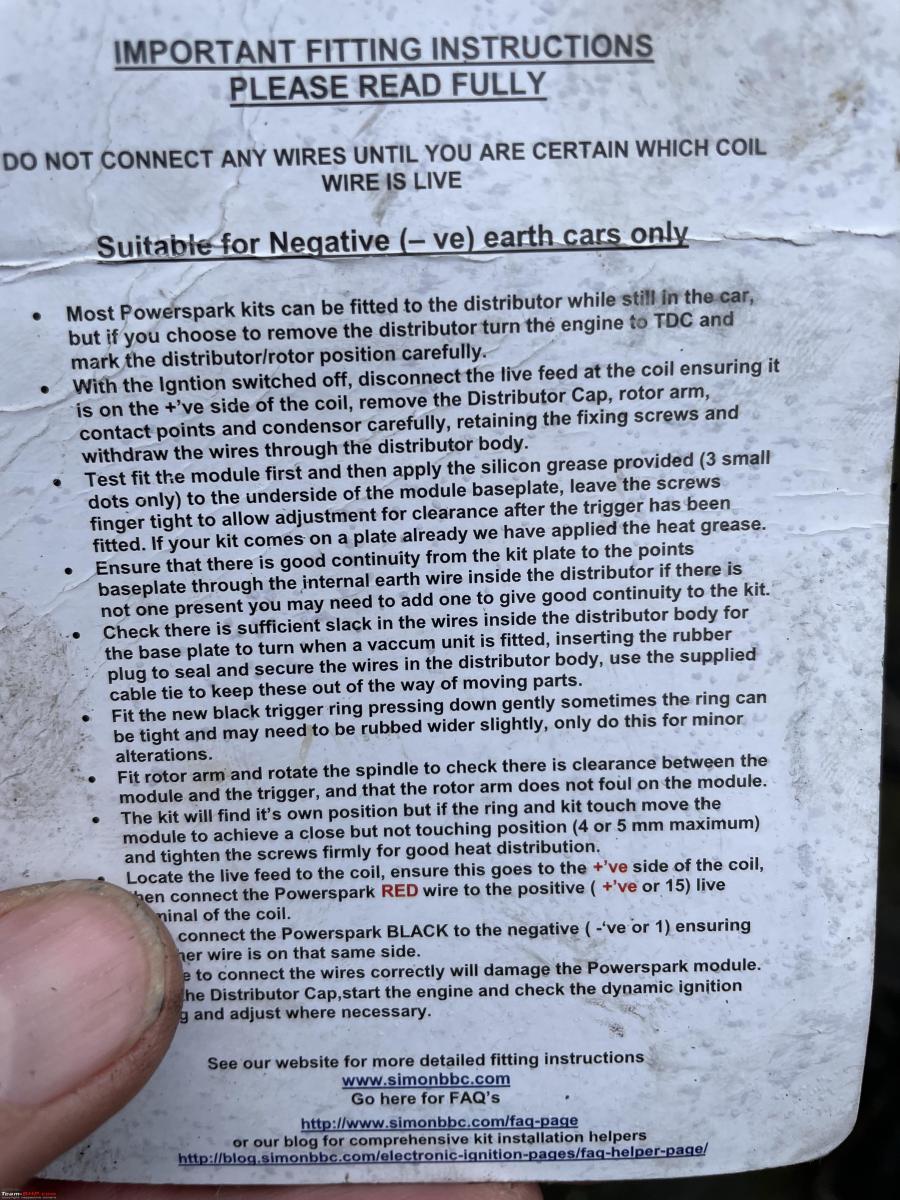
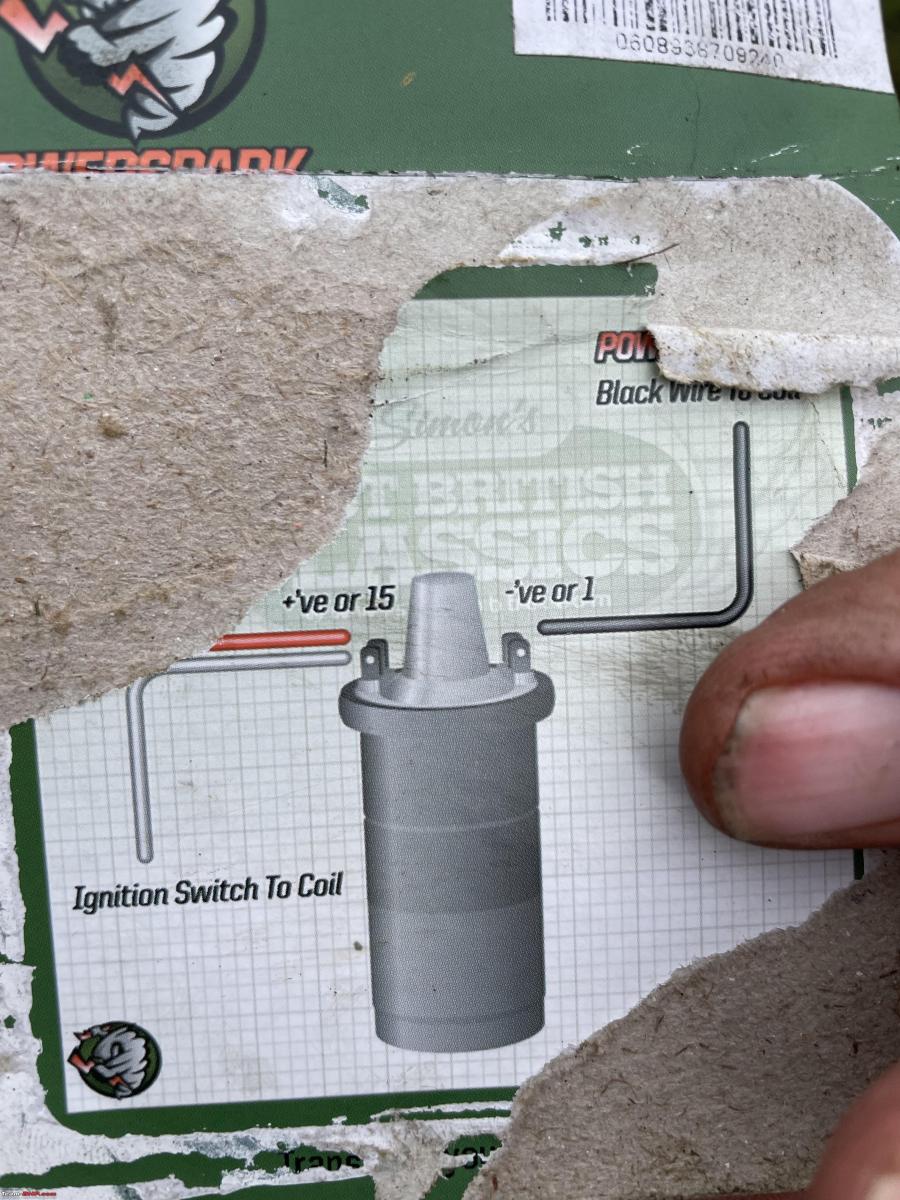
Took us maybe 15 minutes to install it and connect it up. It took that long because it has to be fastened with one tiny screw and it is very fiddly and difficult to get it all in the correct orientation. We also installed a new coil. Mechanical and electronic ignition use different coils.
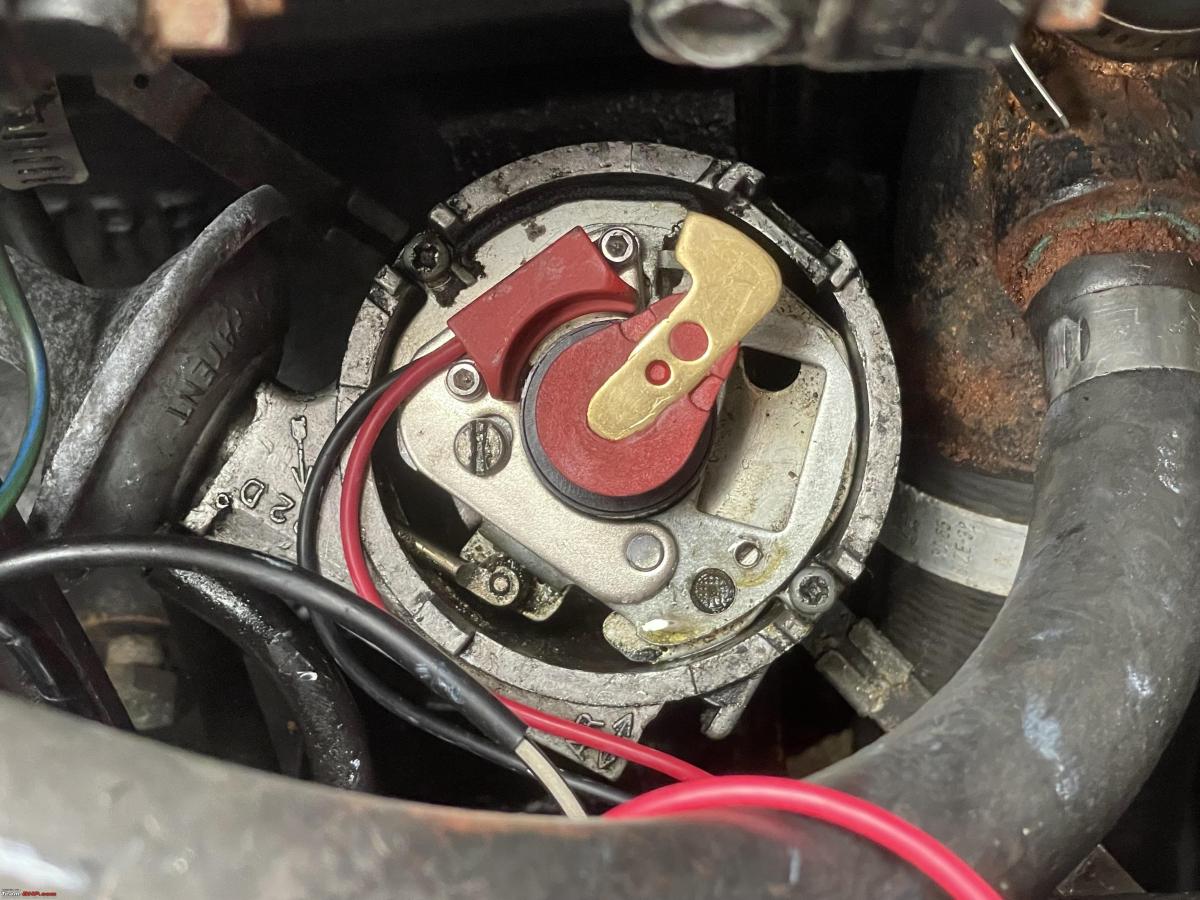
Next we checked the ignition again. And the same baffling problem occurs. We get good, strong, spark on the end of the HT lead when we pull it out of the distributor, hold it near mass and crank the engine. Which means that the low and high Voltage circuit to the coil (and also a ballast resistor) and the distributor is working. As it is sparking the Hall sensor is working too. But we are not getting voltage and thus no spark at the end of the spark plug leads.
So we checked everything again, check the rotor height compared to the contact in the distributor cap. Broke out all the manuals and poured over many diagrams.
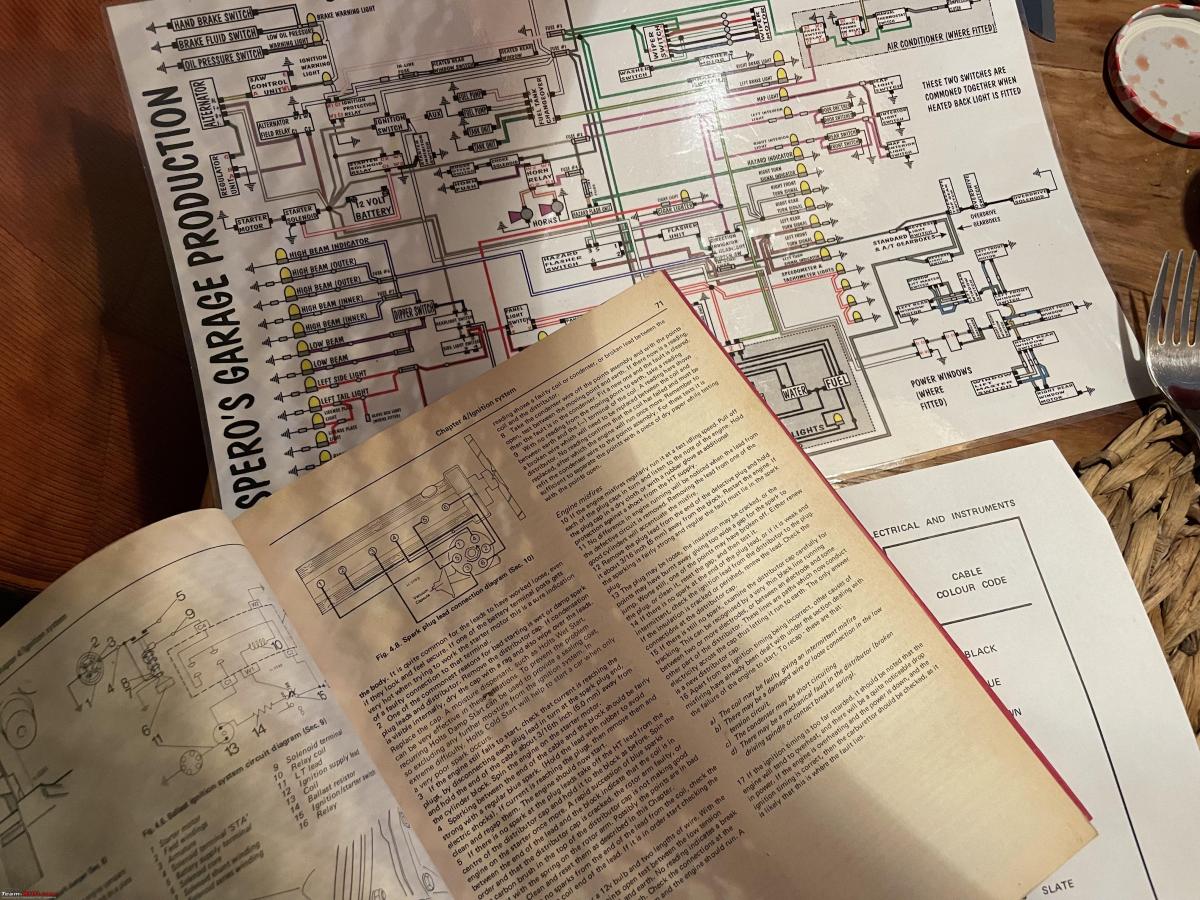
We checked, measured and did everything we could think of. We checked the distributor cap with an old one. All fine. Same with the rotor, all fine. This is quite frustrating. Ignitions do not come much simpler than this. At some point, I was pulling at the spark plug leads and one of the connectors came off. These leads are very very old. As I broke one, we decided we might as well replace them all and see if it makes any difference.
So this troubleshooting ain’t done yet.
Peter is a professional classic car valuer. He is out on the road four days a week, looking at people's classic cars and inspecting them, listening to their stories about how well they maintain their classic cars and pampering them. As the saying goes, "butchers don’t eat their own sausages". That goes to some extent for Peter as well looking at the state of his Jaguar. As a former certified Official Jaguar Concour d’elegance judge, I also pointed out to him that the window washer reservoir is not original!

Peter told me this was just a functional and practical solution to get the car to pass through its last MOT/APK. I told him my Indian friends would approve!
We did a few small jobs on Peters’ Lancia Dedra as well. Including checking the AC components and refrigerant circuit with my UV light. Nothing showed up. That is not a hundred percent sure, but most likely it is not a huge leak, or if we are leaky, a leak at all, that is causing the AC not to work.
We also had a good look at the steering of the Jeep. I felt it has some play in it. We found one of the ball joints directly on the pitman arm is most likely the culprit.
So I picked up a new one this morning from my local Jeep parts guy Edwin.
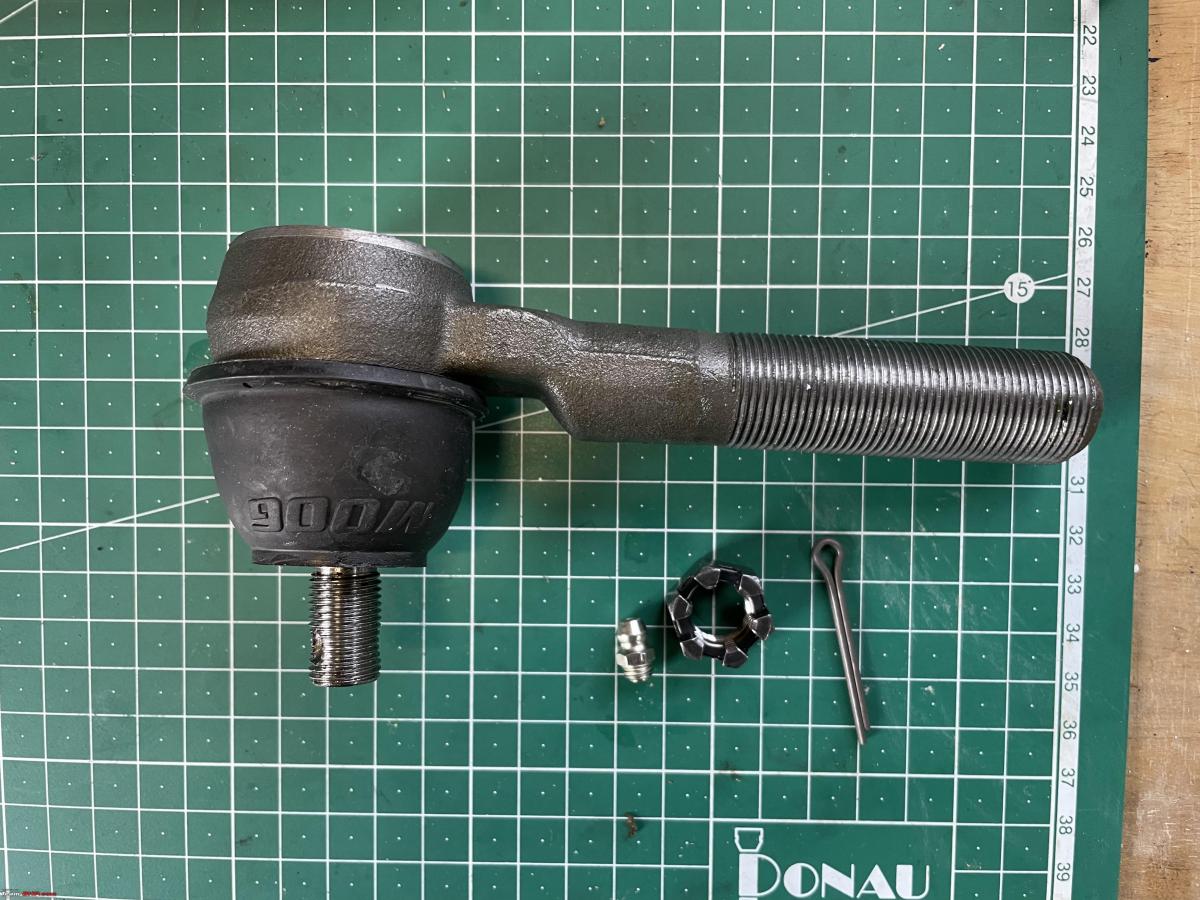
Tomorrow I am doing my car polishing workshop. Looking forward to it. I hosed down the Jeep as it was covered in Sahara sand. That happens occasionally here.
Looks pretty good already. Will look even better when I am done polishing and waxing it!

The workshop guy asked me to bring all my polishing/wax material so he could have a look at it and advise me on what to use, or how to use it. I have a strong suspicion he will tell me I should have never used it in the first place and I should buy his stuff. We will see.
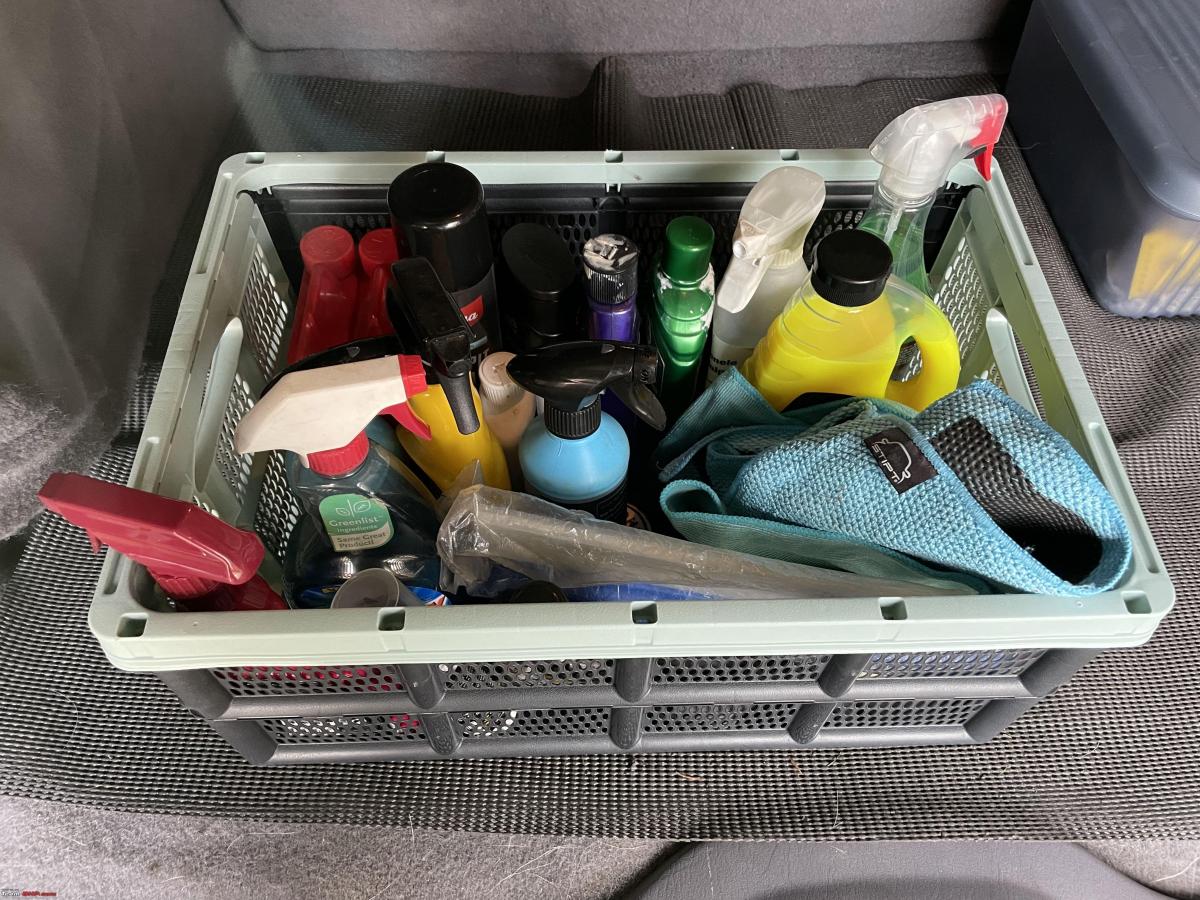
Check out BHPian comments for more insights and information.

























